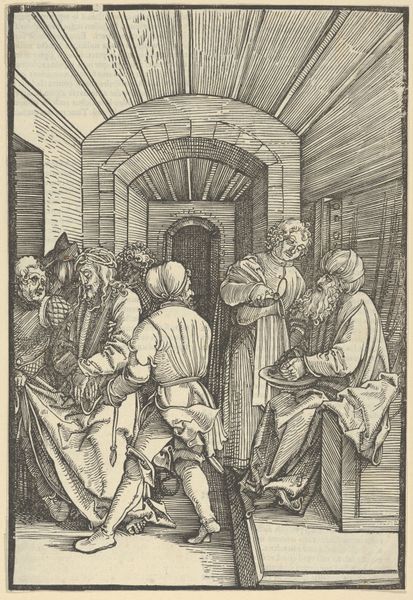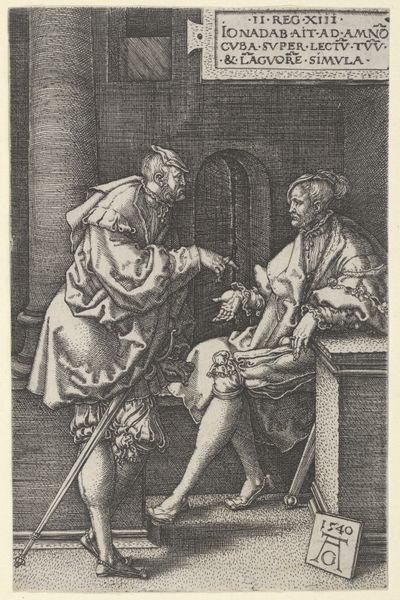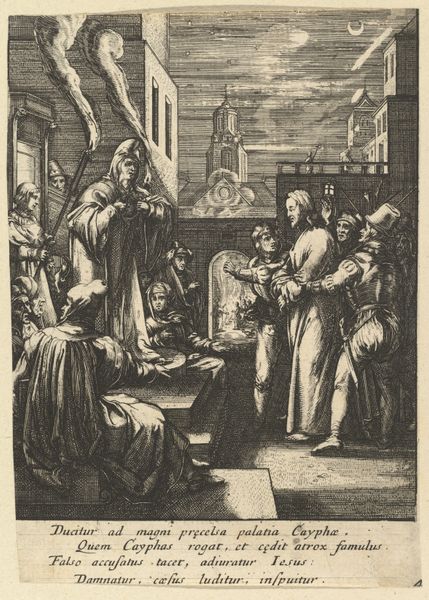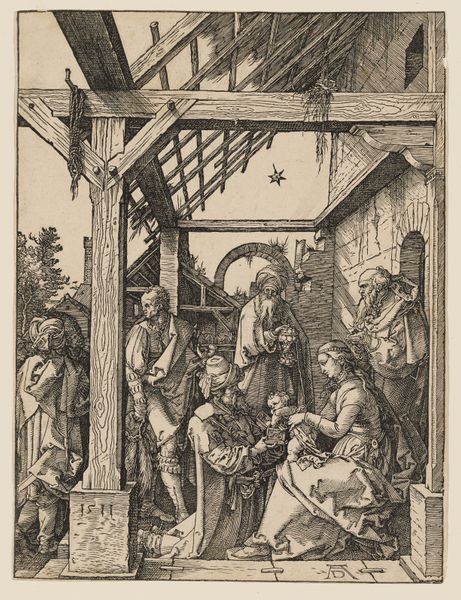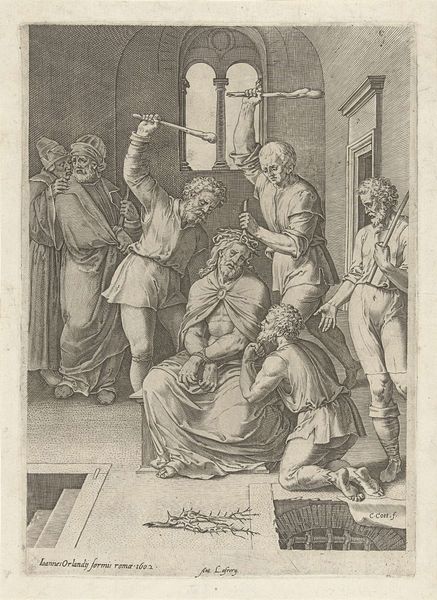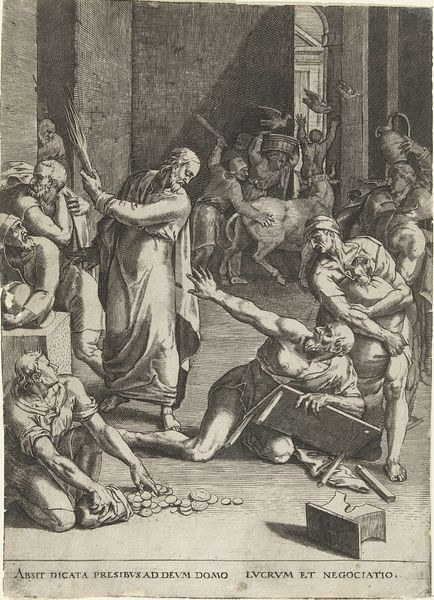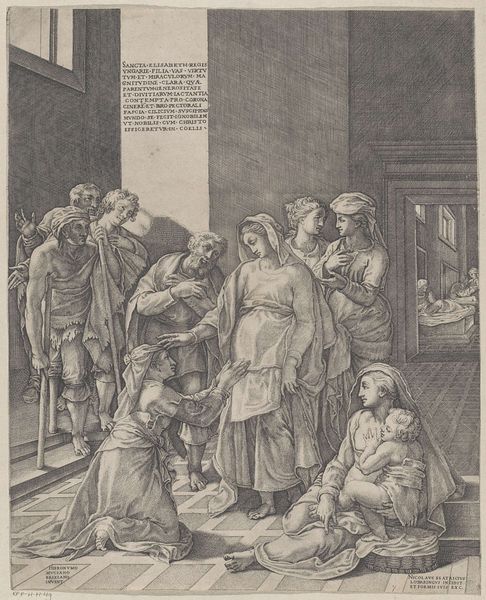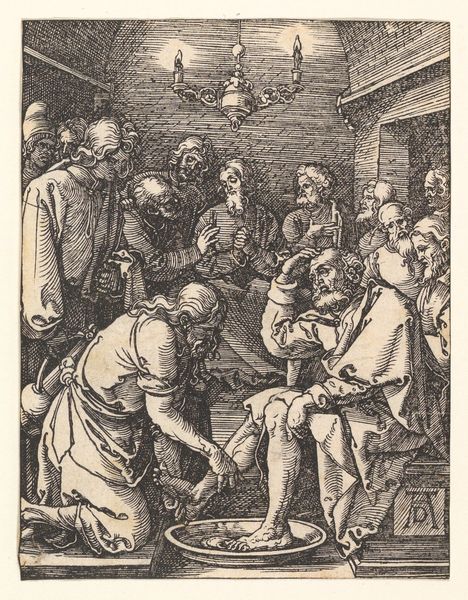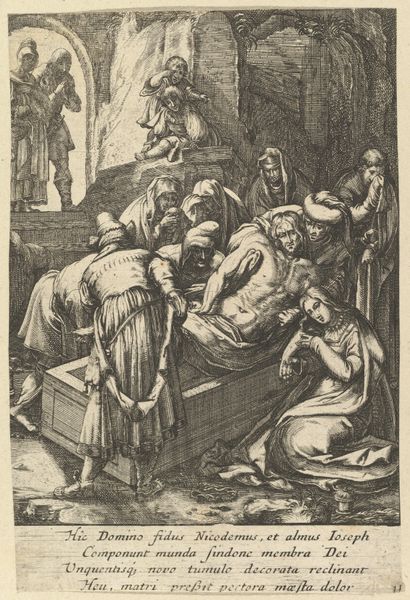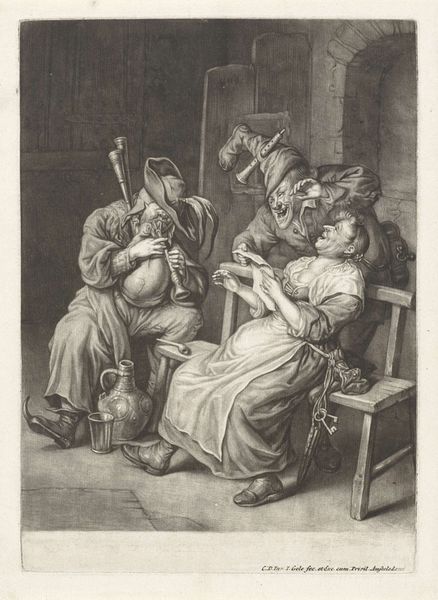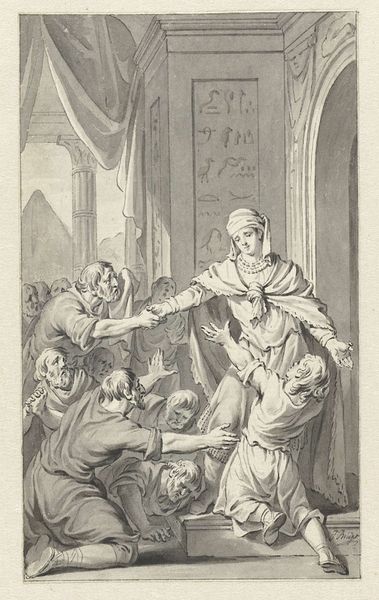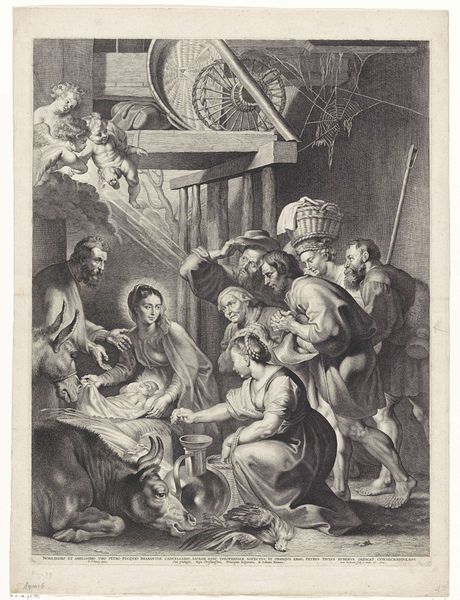
etching, engraving
#
etching
#
mannerism
#
figuration
#
history-painting
#
engraving
Dimensions: height 243 mm, width 188 mm
Copyright: Rijks Museum: Open Domain
Curator: Welcome. Today, we’re observing “John the Baptist in Prison,” an etching and engraving produced between 1553 and 1558 by Hans Liefrinck. Editor: It’s stark, isn’t it? The isolation just radiates from the composition. You immediately focus on John in his captivity; it feels hopeless. Curator: Notice the sharp contrasts created through line work—the geometric rigidity of the architecture versus the organic curves of the figures. The light is focused upon John, drawing attention to the subject’s isolation, reinforced by the heavy chains around his ankles. Editor: Yes, and that isolation speaks to the persecution many faced during the Reformation. John the Baptist becomes a symbol of resistance against unjust authority, embodying the struggles of those imprisoned for their beliefs. The way Liefrinck uses Mannerist conventions is clear here: the emotion, the drama! Curator: Agreed. The Mannerist influence is unmistakable, notably in the exaggerated emotion and distorted proportions contributing to the visual tension. See how Liefrinck employed engraving and etching to produce a complex array of textures and tones? Editor: Thinking about that craft, etching and engraving also democratized image production; more people had access to these narratives and, potentially, aligned themselves with the figure in chains. It created a wider sense of community, both religiously and politically, beyond class lines. What strikes me is that while it aims to tell a religious tale, there's so much that echoes in resistance movements across time. Curator: Exactly! His command over the graphic medium is evident. The layering creates depth and complexity, demanding careful viewing to appreciate fully. Editor: This piece reminds us how art can act as both a mirror reflecting historical struggles and a beacon of enduring resilience and calls to resist unjust systems. Thank you for letting me share that interpretation. Curator: And thank you for your reading of this work; together we see how Liefrinck offers a masterclass in form that speaks meaningfully even now.
Comments
No comments
Be the first to comment and join the conversation on the ultimate creative platform.
